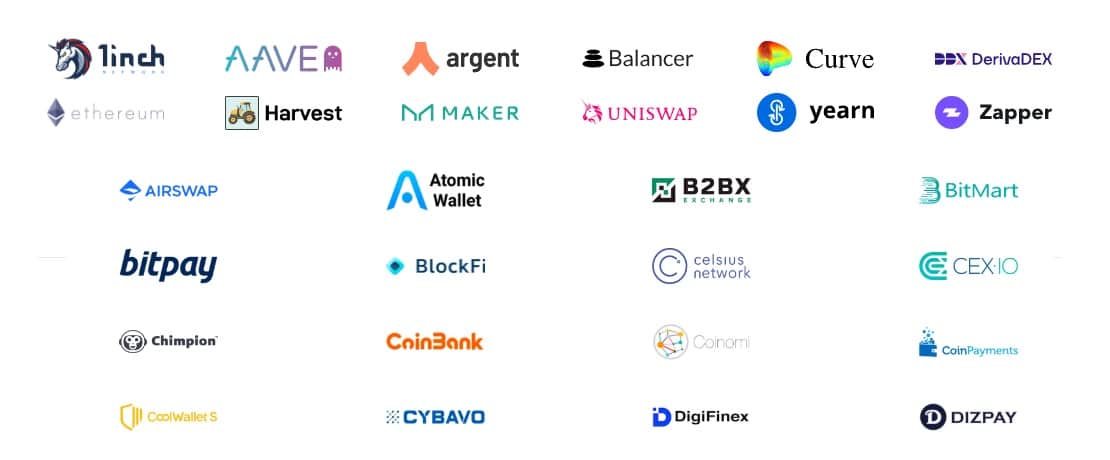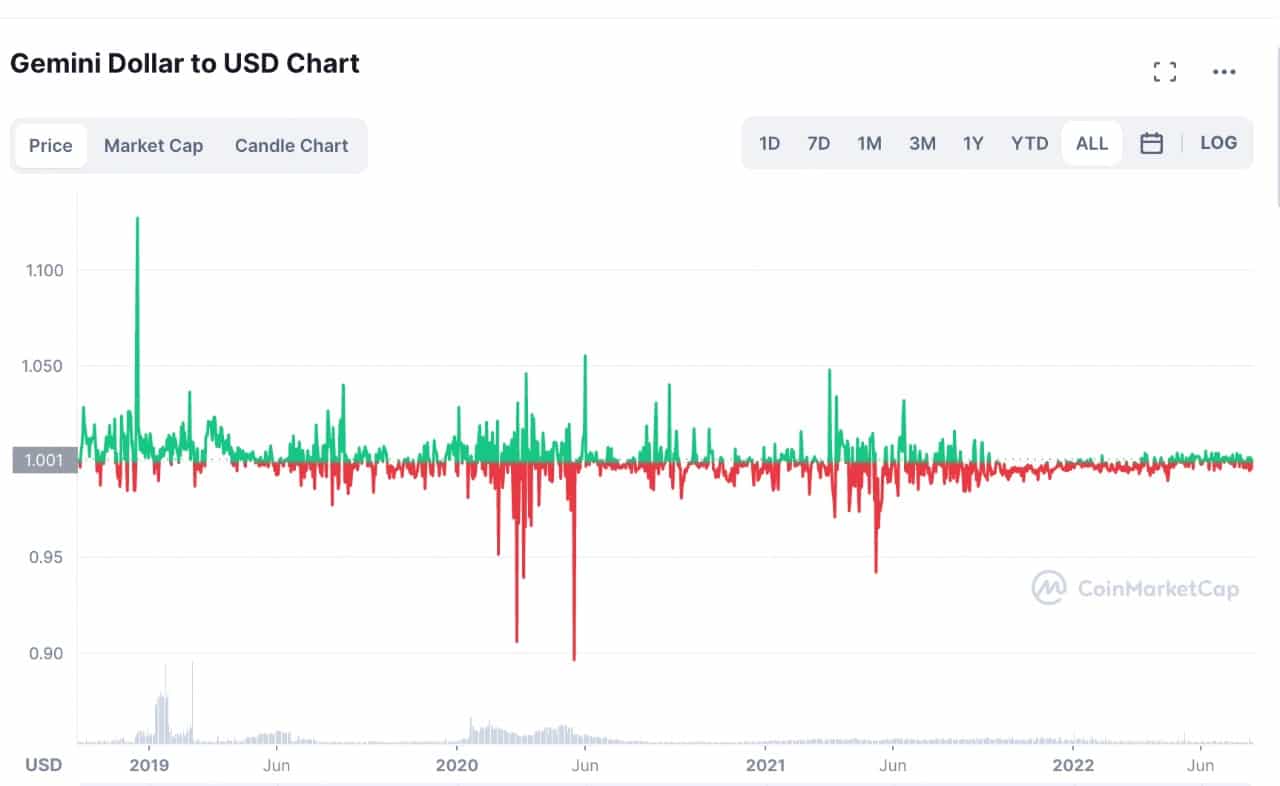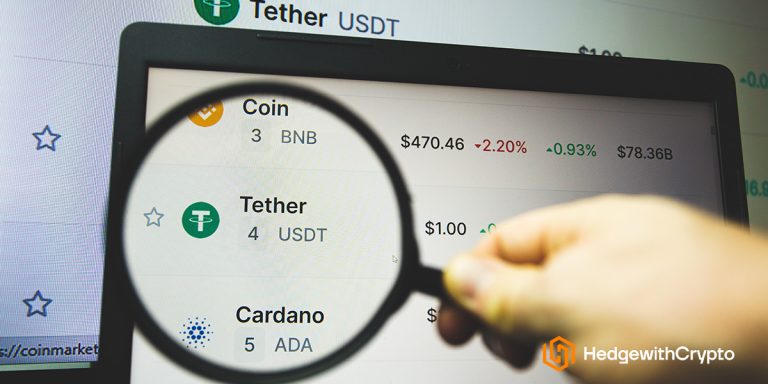What Is GUSD, What’s It Used For & Its Pros and Cons
Key Takeaways:
- Gemini USD (GUSD) is an ERC-20 stablecoin that is pegged against the US Dollar and backed by the Boston State Street Bank.
- GUSD is typically used as an intermediary asset where it is traded with USDT, BTC, and ETH. It is also used to earn crypto yields and provide liquidity in DeFi pools.
- The Gemini USD is one of the few regulatory stablecoins in the market. It has approval from the New York Department of Financial Services.
TABLE OF CONTENTS
Stablecoins are the biggest assets within the crypto ecosystem. They are pegged to the USD and offer a lot of value to customers. Since the UST crypto failure triggered the bear market in 2022, investors are looking for a good stablecoin to weather the storm of crypto volatility. The Gemini Dollar, GUSD, is one cryptocurrency. In this guide, we answer what is GUSD, explore how it works, and the pros and cons of using it for trading crypto.
What is GUSD?
GUSD is a stablecoin that is pegged to USD and is backed by Boston’s State Street bank. The stablecoin is insured via the FDIC deposit insurance program. GUSD or Gemini USD was launched in 2018 after Gemini, one of the world’s leading cryptocurrency exchanges, got approval from the New York Department of Financial Services. The cryptocurrency exchange has claimed that GUSD is the world’s most transparent and the only regulated stablecoin.
According to the Winklevoss Brothers, founders of Gemini, GUSD is backed by fiat assets and has the potential to bridge the gap between crypto and the traditional financial sectors. Simply put, it is not an algorithmic stablecoin. Also, GUSD has no hard cap. That is, the developers have not set a circulation schedule or limited the supply.
This Is What GUSD Can Be Used For
Investors must remember that stablecoins are intermediary assets. GUSD is no different. The Gemini USD allows users to buy other cryptocurrencies from trading platforms and crypto exchanges safely and conveniently. That said, the most common crypto assets that can be purchased using GUSD are USDT, BTC, and ETH. It can also be used to earn a yield by storing in interest-earning platforms or providing liquidity in pools within the DeFi space. Some of the applications that can use GUSD are shown below:

Here are the steps to use GUSD:
- Buy GUSD from the cryptocurrency exchange: There is a wide array of cryptocurrency exchanges that have listed GUSD. However, it is recommended that users invest in GUSD on Gemini. Gemini is GUSD’s primary crypto trading platform, allowing investors to trade GUSD without paying fees.
- Swapping GUSD for other cryptos: The investor can then visit suitable cryptocurrency exchanges to swap GUSD for BTC, ETH, or USDT.
When registered users convert their USD into Gemini Dollars and transfer them to their Ethereum wallet addresses, Gemini adjusts the GUSD holding depending on the number of tokens in circulation.
The Pros and Cons of GUSD
Fiat-backed stablecoins are considered the most stable crypto assets, even in the volatile market. That said, these crypto assets are also affected by the movements of the fiat market. Thus, investors must weigh all the pros and cons before investing in GUSD.
Pros of GUSD:
- GUSD is an ERC-20 token on the Ethereum blockchain. ERC-20 tokens can be easily stored inside personal hardware wallets. Furthermore, GUSD also benefits from the Ethereum blockchains, such as speed, transparency, and security.
- Popular stablecoin to earn interest on selected platforms.
- GUSD is audited monthly to ensure that GUSD remains fully collateralized at 1:1 to the US dollar.
- The Gemini USD is one of the few regulatory stablecoins in the market. It has approval from the New York Department of Financial Services.
- GUSD has strong institutional backing due to its founders Cameron and Tyler Winklevoss, ’s strong financial background.
Cons of GUSD:
- The liquidity of the GUSD is low in most leading cryptocurrency exchanges compared to USDT and USDC.
- GUSD is not a decentralized stablecoin. It is controlled by the Gemini Trust Company, a centralized body operating under strict regulations. Therefore, GUSD can be seized, censored, and confiscated if these regulatory bodies deem a transaction false or malicious.
- Investors who care about privacy should know that withdrawal of GUSD from the cryptocurrency exchanges is subject to submitting the KYC details.
This Is How GUSD Works
Whenever customers withdraw Gemini dollars from the Gemini exchange, new GUSD tokens are created. The stablecoins are then destroyed whenever customer redeems them or put them back in their Gemini accounts. This section discusses the various aspects of the GUSD network.
Security
GUSD was created under strict controls allowing Gemini LLC to perform upgrades whenever needed. Gemini offers to resolve the following challenges using its GUSD tokens:
- Resolving the vulnerabilities of the existing stablecoin ecosystem
- Adding new features to the network
- Improving the operational efficiency of the system
- and controlling the flow of GUSD during emergency conditions, such as pausing, blocking, and even reversing it in case of a security incident.
To accomplish these tasks, Gemini uses layers of smart contracts on GUSD. There are three smart layers:
- Proxy lawyer: The proxy layer creates and transfers coins. It also establishes a mechanism to stop the issuance of the GUSD in case of a security incident. As a governance layer, the proxy layer specifies the events that are allowed to take place in the blockchain.
- IMPL Layer: IMPL layer is home to the data and logic of the smart contracts. It stores the logic using a GUSD that is created, transferred, and burned out of circulation. While it is similar to the ERC-20’s layer, the difference here is that it must receive the proxy layer’s permission before performing any talk.
- Store Layer: The store is the final layer of the GUSD ecosystem. It is a ledger mapping the balances to their owners. It is also the layer where transactions become available for public viewing.
These three layers are also responsible for securing the Gemini Dollar Network.
Limiting the Supply
While Gemini creates a new GUSD after withdrawal, there are limits. For each GUSD token, there should be 1 USD in reserve. If the number of GUSD exceeds USD, it will depeg. Thus, to maintain the peg and limit the supply, GUSD implements a custodian system.
Printslimiter is the custodian system in place for this purpose. Built into the IMPK layer, it sets the hard cap on the number of GUSD to create. To determine the limit, it implements the method of checks and balances. Through that, it decides whether to create new tokens whenever there is a change in the overall supply. Thus, to increase the supply, it relies on approval from an offline keyset, and to decrease the supply, it gets approval from an online custodian.
Is Gemini Dollar a Good Investment?
While most stablecoins, like GUSD, are backed by fiat currencies, it is critical to realize that they are cryptocurrencies and, thus, are impacted by the volatility of the other coins in the market. The impact is more profound during the bear phase. That said, GUSD is one of the most popular stablecoins in the market, having been able to stay pegged for most of its run.
The Risks With Holding GUSD
When it comes to the risks of investing in Gemini Dollar, there are two to keep in mind:
- The Gemini Earn Program: Investors can lock up their GUSD to earn interest on crypto holdings on the exchange. It can be risky because, under suboptimal market conditions, the stored GUSD can be lost.
- Limits to withdrawal: Depending on the exchange, GUSD investors can withdraw a certain amount from their accounts.
- Stablecoin value can fluctuate: Soon after launch, this stablecoin rose above the peg, reaching $1.100. While it has not been able to perform the same feat since then, hope remains for this fiat-backed stablecoin. At the end of 2021, GUSD depegged from USD for a month – creating fear among investors. It was only after April 2022 that this stablecoin could find stable ground and continue to stay pegged to the USD.
Overall, GUSD is one of the safest stablecoins to hold that can be used to maintain its value against US Dollars. However, investors must be aware of the market conditions and store GUSD safely if holding for longer-term.

Wallets to store GUSD
Investors have many options for storing their GUSD. They can either rely on the exchange’s security protocols to keep their stablecoin safe or move the GUSD to their personal wallets. There are two types of wallets to choose from:
- Hot wallets: These are software wallets that come as browser extensions, standalone applications, or mobile apps. Hot wallets are generally the accounts of the cryptocurrency exchange. The term – hot – comes from the fact that they are consistently connected to the internet. They are convenient and simple to use. However, the security of these wallets is up to the cryptocurrency exchange. While trading platforms such as Gemini have implemented many security measures, hacking is always a threat. That said, a DEX wallet, like the atomic wallet, has proven to be more secure than most CEX wallets.
- Cold Wallets: Cold Wallets are hardware wallets disconnected from the internet. Due to their high security, they are the best storage units for GUSD. The Ledger Nano X is a good hardware wallet for GUSD.
Frequently Asked Questions
How secure is GUSD?
GUSD is a USD-pegged stablecoin that’s audited monthly by BPM LM. Furthermore, Gemini secures the customer assets inside FDIC-insured bank accounts. Based on these factors, investors can consider GUSD a secure stablecoin.
How much is GUSD worth?
The GUSD is a stablecoin that is pegged 1:1 to the US dollar. However, depending on the market conditions, the value of a stablecoin can be fractionally more or less than the USD. That said, GUSD is one of the most stable stablecoins in the market that has managed to stay pegged even during the bear market.
Is GUSD insured by FDIC?
Yes, according to the website, GUSD is insured by the FDIC deposit insurance program. It allows Gemini to offer concessions to the investors if there is a hacking event.



